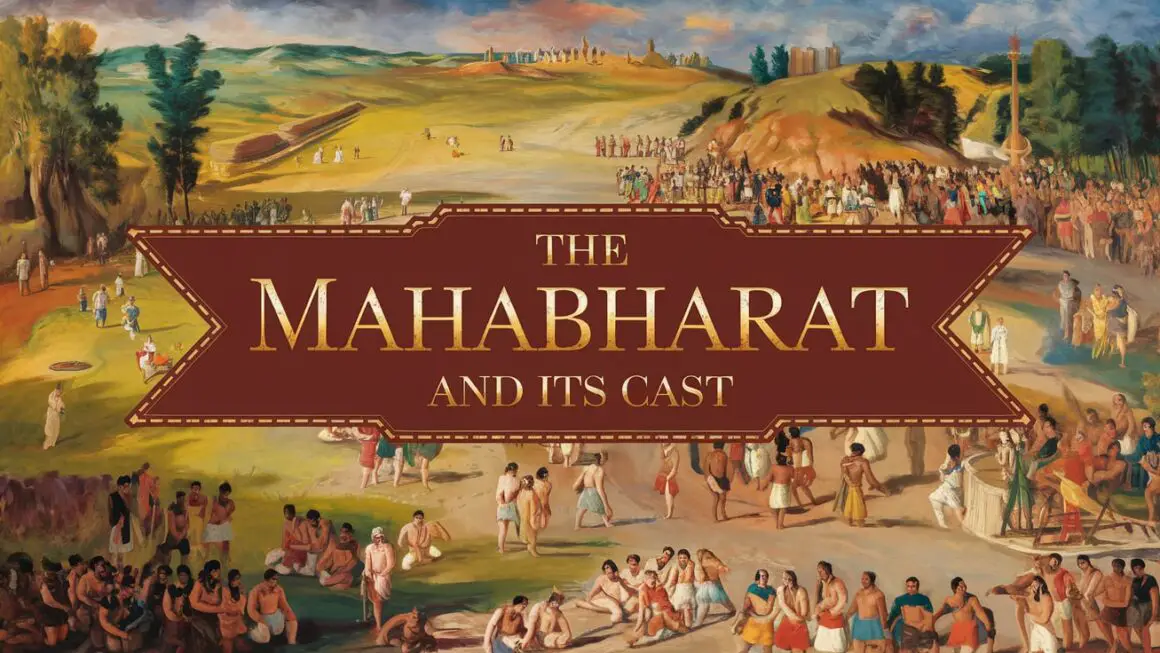Introduction
Overview of Rajasthani Cuisine
Rajasthani cuisine, a vibrant reflection of the state’s arid landscape and royal heritage, is known for its rich flavors and diverse dishes. Characterized by its use of locally available ingredients like millets, beans, and dairy, Rajasthani cuisine offers a unique blend of spicy, sweet, and tangy flavors that make it distinct from other Indian regional cuisines.
Historical Influence on Rajasthani Cuisine
The cuisine of Rajasthan has been shaped by its geography and history. The arid climate led to the use of ingredients that have a long shelf life, such as dried lentils, beans, and spices. Additionally, the royal kitchens of Rajasthan, influenced by Mughal and Rajput culinary practices, contributed to the development of elaborate and richly flavored dishes that are now integral to Rajasthani cuisine.
Importance of Rajasthani Cuisine in Indian Culture
Rajasthani cuisine holds a special place in Indian culture, symbolizing the hospitality and warmth of the people. Meals are often a grand affair, reflecting the tradition of serving food with love and respect. Festivals and special occasions in Rajasthan are marked by the preparation of traditional dishes that celebrate the region’s culinary heritage.
Regional Variations
Marwar Region
Marwar, the largest region in Rajasthan, is known for its bold and spicy flavors. Key dishes include Dal Baati Churma, a meal comprising baked wheat balls, spicy lentil soup, and a sweet crumbled wheat mixture.
Mewar Region
Mewar’s cuisine is influenced by its warrior culture and royal traditions. Laal Maas, a fiery mutton curry, and Gatte ki Sabzi, gram flour dumplings in a yogurt-based curry, are popular dishes from this region.
Shekhawati Region
The Shekhawati region is known for its vegetarian dishes that utilize locally grown grains and legumes. Bajre ki Roti, a pearl millet flatbread, and Ker Sangri, a dried berry and bean curry, are staples of Shekhawati cuisine.
Hadoti Region
Hadoti cuisine is distinguished by its use of dairy products and mild spices. Dishes like Mohan Maas, a creamy meat curry, and Rabri, a sweet condensed milk dessert, are hallmarks of this region’s culinary tradition.
Key Ingredients
Spices and Herbs
Rajasthani cuisine heavily relies on an array of spices such as cumin, coriander, turmeric, and red chili. These spices not only enhance flavor but also provide numerous health benefits.
Grains and Legumes
Millets like bajra (pearl millet) and jowar (sorghum) are staples in Rajasthani cuisine. Lentils and beans, such as moong and chana, are also widely used in various dishes.
Dairy Products
Dairy plays a crucial role in Rajasthani cooking. Ghee (clarified butter), buttermilk, and yogurt are common ingredients that add richness and depth to dishes.
Vegetables and Fruits
Given the arid climate, vegetables like ker (a type of wild berry) and sangri (beans from the khejri tree) are commonly used. These ingredients are often dried to increase their shelf life.
Traditional Cooking Methods
Tandoor Cooking
The tandoor, a traditional clay oven, is used extensively in Rajasthani cooking. It imparts a smoky flavor to dishes like rotis and kebabs, making them particularly delicious.
Slow Cooking Techniques
Many Rajasthani dishes are slow-cooked to enhance the depth of flavors. This method allows the spices and ingredients to meld together, resulting in rich and hearty dishes.
Use of Indigenous Utensils
Traditional Rajasthani utensils such as brass and copper pots are used for cooking. These utensils are believed to enhance the taste and nutritional value of the food.
Popular Rajasthani Dishes
Dal Baati Churma
A quintessential Rajasthani dish, Dal Baati Churma consists of baked wheat balls (baati) served with spicy lentil soup (dal) and a sweet crumbled wheat mixture (churma). This hearty meal is a favorite among locals and visitors alike.
Gatte ki Sabzi
Gatte ki Sabzi features gram flour dumplings cooked in a spicy yogurt-based curry. This vegetarian dish is rich in flavors and often served with steamed rice or roti.
Laal Maas
Laal Maas is a fiery meat curry made with succulent pieces of mutton cooked in a spicy red chili sauce. This dish, a favorite among meat lovers, showcases the bold and robust flavors of Rajasthani cuisine.
Ker Sangri
Ker Sangri is a traditional dish made from dried ker berries and sangri beans. Cooked with spices and yogurt, this dish is unique to Rajasthan and is often served with bajra roti.
Mohan Maas
Mohan Maas is a royal dish made with tender pieces of mutton cooked in a rich, creamy sauce flavored with spices and nuts. This dish exemplifies the luxurious culinary traditions of Rajasthan’s royal kitchens.
Bajre ki Roti
Bajre ki Roti, made from pearl millet flour, is a staple in Rajasthani households. This nutritious flatbread is often served with ghee and a variety of side dishes.
Pyaaz Kachori
Pyaaz Kachori is a popular street food in Rajasthan. These deep-fried pastries are stuffed with a spicy onion filling and are enjoyed as a snack or breakfast item.
Ghevar
Ghevar is a traditional Rajasthani dessert made from flour, sugar, and ghee. This disc-shaped sweet is often soaked in sugar syrup and topped with nuts, making it a festive treat.
Mawa Kachori
Mawa Kachori is a sweet version of the traditional kachori, stuffed with a mixture of mawa (reduced milk) and nuts, then deep-fried and soaked in sugar syrup. This decadent dessert is a must-try.
Malpua
Malpua are sweet pancakes made from flour, milk, and sugar, often flavored with cardamom. They are deep-fried and soaked in sugar syrup, making them a deliciously rich dessert.
Accompaniments and Condiments
Chutneys and Pickles
Rajasthani meals are incomplete without a variety of chutneys and pickles. Common chutneys include mint, coriander, and garlic, while pickles often feature ingredients like mango, lime, and chili.
Papad and Chaas
Papad (crispy lentil wafers) and chaas (spiced buttermilk) are typical accompaniments to a Rajasthani meal. They add a refreshing contrast to the rich and spicy dishes.
Raita Varieties
Raita, a yogurt-based side dish, is commonly served to cool down the palate. Variants include boondi raita, cucumber raita, and mint raita.
Special Rajasthani Beverages
Thandai
Thandai is a refreshing drink made with a blend of milk, almonds, fennel seeds, rose petals, and spices. It is especially popular during the festival of Holi.
Chaas
Chaas, a spiced buttermilk drink, is a staple in Rajasthan. It is light, refreshing, and aids in digestion.
Lassi
Lassi is a sweet or savory yogurt-based drink. In Rajasthan, it is often flavored with cardamom and saffron, making it a deliciously cooling beverage.
Festive and Seasonal Foods
Food during Diwali
Diwali, the festival of lights, is marked by the preparation of special sweets and snacks such as ghevar, besan laddu, and shakkarpara.
Holi Specialties
Holi, the festival of colors, features treats like gujiya (sweet dumplings), thandai, and dahi bhalla (yogurt-based snack).
Summer and Winter Foods
Rajasthani cuisine adapts to the seasons with cooling dishes like chaas and kachumber (salad) in summer, and hearty dishes like bajre ki khichdi and moong dal halwa in winter.
Street Food and Snacks
Kachori
Kachori, a deep-fried pastry filled with spicy lentils or onions, is a beloved street food in Rajasthan. Variants include pyaaz kachori and mawa kachori.
Samosa
Samosas, triangular pastries filled with spiced potatoes and peas, are another popular snack. They are often served with chutneys.
Mirchi Bada
Mirchi Bada consists of large green chilies stuffed with spiced potato filling, then coated in gram flour batter and deep-fried. This spicy snack is a favorite among locals.
Pakora Varieties
Pakoras are deep-fried fritters made with vegetables like spinach, onion, and potato. They are a common street food and are enjoyed with chai (tea).
Health Benefits of Rajasthani Cuisine
Nutritional Value of Common Ingredients
Ingredients like millets, legumes, and dairy products used in Rajasthani cuisine are rich in essential nutrients, providing a balanced diet.
Health Benefits of Spices
Spices such as turmeric, cumin, and coriander have numerous health benefits, including anti-inflammatory and digestive properties.
Benefits of Traditional Cooking Methods
Traditional cooking methods like slow cooking and the use of earthenware pots preserve the nutritional value of the food and enhance its flavors.
Cooking Tips and Techniques
Enhancing Flavors with Spices
Using whole spices and roasting them before grinding can enhance the flavors of Rajasthani dishes.
Balancing Ingredients
Balancing the use of spices, dairy, and grains is key to creating authentic Rajasthani flavors.
Cooking with Indigenous Utensils
Using traditional utensils like brass and copper pots can improve the taste and nutritional value of the food.
Famous Rajasthani Restaurants
Noteworthy Restaurants in Rajasthan
Some of the best places to experience authentic Rajasthani cuisine include Chokhi Dhani in Jaipur, Surya Mahal in Udaipur, and Niros in Jaipur.
Popular Rajasthani Restaurants Globally
Rajasthani cuisine has gained international recognition, with popular restaurants in cities like London, New York, and Dubai offering traditional dishes.
Culinary Tours in Rajasthan
Overview of Culinary Tours
Culinary tours in Rajasthan offer a deep dive into the region’s food culture, allowing participants to experience cooking classes, market visits, and dining at local homes.
Popular Culinary Tour Routes
Popular routes include Jaipur, Udaipur, and Jodhpur, each offering unique culinary experiences and local specialties.
Experiences and Activities
Activities on culinary tours often include visits to spice markets, cooking demonstrations, and tasting sessions of local dishes.
Expert Insights on Rajasthani Cuisine
Chef Interviews
Interviews with renowned chefs like Manish Mehrotra and Pushpesh Pant provide insights into the intricacies of Rajasthani cuisine and its modern adaptations.
Food Historians’ Views
Food historians offer perspectives on the evolution of Rajasthani cuisine, its historical significance, and its impact on Indian culinary traditions.
Conclusion
Summary of Rajasthani Cuisine
Rajasthani cuisine, with its rich flavors, diverse ingredients, and traditional cooking methods, offers a unique and memorable culinary experience.
The Cultural Significance
The cuisine of Rajasthan is not just about food; it is a reflection of the state’s history, culture, and traditions, symbolizing the hospitality and warmth of its people.
Encouragement to Experience the Cuisine
Exploring Rajasthani cuisine is a journey through the flavors and traditions of one of India’s most culturally rich regions. Whether through home cooking or dining at renowned restaurants, experiencing this cuisine is a culinary adventure worth undertaking.














